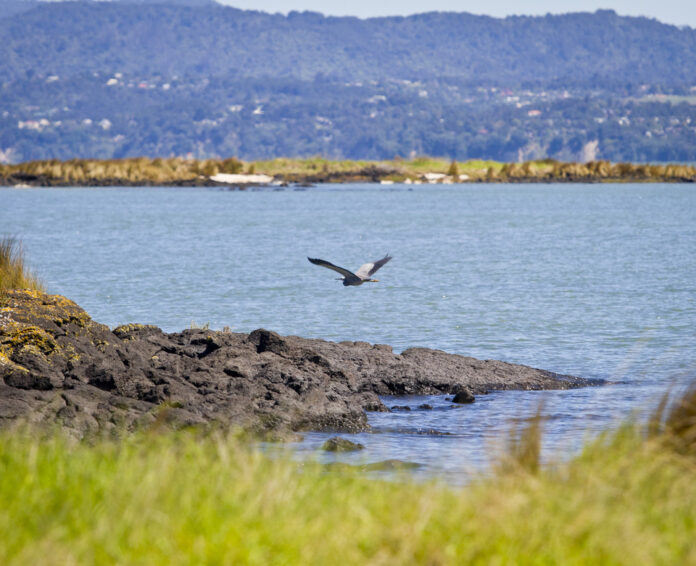Source: Auckland Council
For the first time, Auckland Council has created a State of the Environment Monitoring Report bringing together data specifically focused on the Manukau Harbour, which looks at changes over time in air, land and water.
Synthesised from the regional State of the Environment report 2021, it provides a firm basis for future considerations around the management of the Manukau Harbour based on long term consistent monitoring.
Environment and Climate Change Committee Chair, Councillor Richard Hills says: “The Manukau Harbour has a highly modified catchment and there has been ecological degradation of the harbour over many decades due to its long history of alteration and pollution by humans.
“The release of the Manukau Harbour Report is one of the ways we’re seeking to improve environmental outcomes for the Manukau Harbour.
“While it will take time to turn the harbour’s degradation around, the monitoring will help us learn from the past and pinpoint where future investment needs to focus.
“The report shows some real improvements over the years in areas we have focused our efforts and investment, for example: air quality, wildlife biodiversity, and upgrades to wastewater treatment discharges which have improved water quality in areas of the harbour.
“I see the report as an important benchmark which will help guide us towards long term improvement of environmental outcomes, and naturally we will work closely with mana whenua, who are the kaitiaki of the Manukau Harbour,” says Cr Hills.
Key findings of the report include:
Air
- Overall air quality in the Manukau catchment is good and improving, showing similar characteristics to the rest of the region. However, instances where air quality drops below national standards still sometimes occur.
Land
- 70 per cent of the forest birds and 55 per cent of wetland birds counted were native species;
- Productive rural soils are over-fertilised and compacted;
- Problematic weeds and pests are only absent where intensive weed and pest control takes place.
Coastal water
- Coastal water nutrient concentrations are elevated compared to regional reference guidelines;
- Large scale improvements in coastal water quality occurred after 2001, with smaller improvements continuing to be seen in the last decade.
- Excess sedimentation has had negative ecological impacts in sheltered tidal creeks. Sites are healthier in the body of the harbour.
- Levels of contaminants (copper, lead and zinc) in marine sediments are elevated in the Māngere Inlet and low at other sites.
Fresh water
- Puhinui Stream is representative of intensive urban and industrial land uses within the catchment. There have been long term improvements in nutrient concentrations, water clarity and metal contamination over the past 25 years.
- There are high concentrations of nitrate in shallow volcanic aquifers. These aquifers feed some of the streams in the southern Manukau Harbour catchment, which contributes to high nitrate levels in surface waters.
Chair of the Manukau Harbour Forum and local board member, Jon Turner says: “Our focus is on ensuring the community can reap the benefits from the sustainable management of the Manukau Harbour, and the report’s release will help us put the spotlight on our taonga.”
“We now have one consolidated report with long term data from which to draw information about water quality, air quality and the land ecosystem to lobby for policy and actions that will enable sustainable and integrated use of the harbour,” says Mr Turner.
The Manukau Harbour Forum is formed by the nine local boards bordering the harbour and is empowered to advocate on harbour issues for decisions that can only be made at council level.
The council has undertaken and continues to progress a broad range of initiatives around the harbour to address issues like water quality, biodiversity and biosecurity, with restoration being part of a broader programme of placemaking in Te Tāruke-ā-Tāwhiri: Auckland’s Climate Plan.
Some of these initiatives include:
- The Awakeri Wetlands Project to construct a 2.3km waterway, which will enable new housing, reduce flooding risk, provide recreation opportunities and improve biodiversity and water quality of the catchment runoff going into the Manukau Harbour;
- Watercare’s Central Interceptor and Western Isthmus Improvement Programme, which will reduce wastewater overflows into both the Waitematā and Manukau harbours;
- Design is underway for a new wastewater treatment plant serving Waiuku, Clarks Beach and Kingseat, which will have sophisticated treatment processes that improve the quality of the wastewater discharged;
- Stream restoration work continues in reserves, such as the Puhinui Stream, to improve stream ecology and reduce pollution;
- The council has partnered with Te Pua Nga Maara at three marae to encourage connection and kaitiaki of waterways using mātauranga Māori;
- A large new wetland has been constructed at Two Popes Road in Takanini to treat runoff from industrial land before it flows into the Papakura Stream and eventually the Manukau Harbour;
- The council works directly with the construction industry to reduce sediment run-off from earthworks;
- Investigation of contamination sources from wastewater in Huia, Foster Bay, Armour Bay, French Bay, Green Bay, Laingholm, Titirangi, Weymouth, St. Annes Foreshore, Lynfield Cove and Clark’s Beach;
- Continuation of the Safe Networks programme to find bad plumbing that contaminates our beaches;
- Several local boards are co-funding work to educate industries about disposing of their waste responsibly through the Industrial Pollution Prevention Project.



